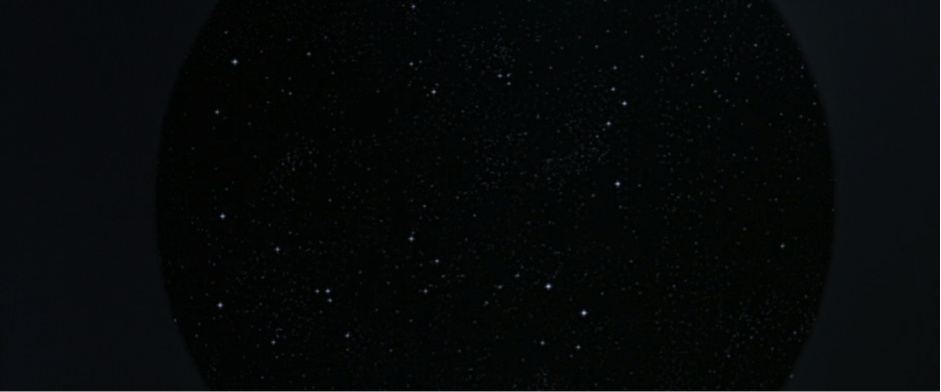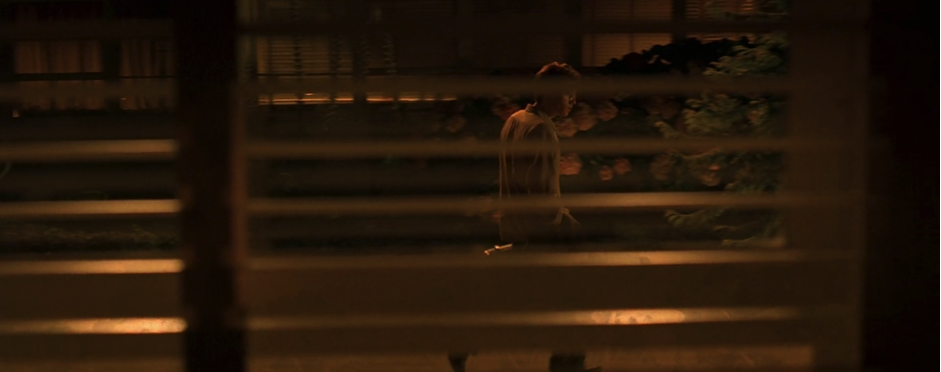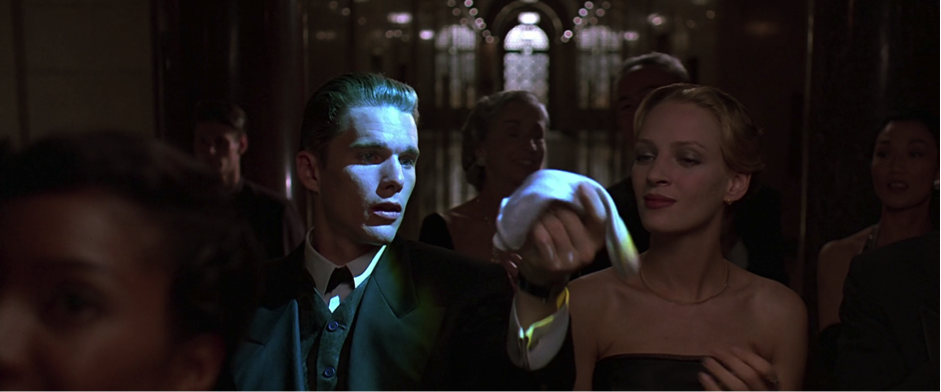by Daniel Tu
Gattaca uses three basic colors to denote different shifts in the main character’s identity—yellow to illustrate his past, blue to depict his future and green to bridge the two. These subtle cues help us to understand on a subconscious level the ways that a restrictive, genetically classist society can manipulate and harm an individual.
Andrew Niccol uses color like a master, without unnecessary adornment or unneeded trills or splashes. Rather, there are no conspicuous colors unless they serve the film, and very conspicuous color choices are displayed at key moments, with such rhythm and consistency that they initiate the attentive viewer into the powerful visual subtext. Gattaca is, at its heart, a film that examines the destruction of identity, and Niccol’s deliberate use of color communicates on a fundamental level the repulsiveness of that destruction.
Color is primarily used to denote the identity of the protagonist of the film. Ethan Hawke plays Vincent Freeman, a genetically unmodified “invalid”, socially shunned for his inferior, natural genetics, who lives in a society that places primacy upon the genetically-perfected. His dream is to go to space, but the space program only accepts those of perfect genetic stock. He forms an alliance with the physically disabled Eugene, who provides him with a steady supply of urine, blood, and other samples of his perfect DNA, thereby creating a genetic disguise for Vincent. Together they create the guise of Jerome Morrow, a cold, acutely designed astronaut who is able to infiltrate the elite space program and who eventually enters space. The drama of the film stems from the delicate balancing of Vincent’s true self against his false, perfect identity—the state of which can be easily gleaned from the colors used in any given shot.
Three primary colors are used to define the three acts and the three stages of Vincent’s life— yellow, blue, and green. Yellow is predominately used in the first act and is used to represent Vincent’s identity as an invalid. Through the use of filters and gels, the color dominates almost every shot in the early parts of Vincent’s life. Yellow light bathes a scene in which a young Vincent realizes that his genetically modified brother is growing taller than he is, despite Vincent being his senior.
Similarly, as shown in the image below, as the child Vincent challenges his younger brother to a swimming race and quickly loses stamina, he gasps for breath in a yellow-tinted sea as his brother overtakes him. Thus, the color yellow not only denotes his past, but also the limitations of his genetically inferior body.
When his application for the space program is rejected on the basis of his imperfect genetics, the lens is also tinted yellow. The color not only denotes physical or genetic obstacles, but social ones as well.
As time passes, yellow becomes less dominant in Vincent’s life—he is learning that he is not a slave to his limitations, and begins to understand that his decisions will override his prescribed destiny. As he walks away from his home and family to try and find a way into the space program, the colors are almost normal when viewed alongside his early childhood.

Not only is the color yellow present duringflashback sequences, but also whenever he opens up or becomes vulnerable—when he talks to Irene, his love interest, for instance, the whole scene is tinted a deep yellow. This denotes his true self, the invalid Vincent who is not genetically altered, who is not flawless and invulnerable, but a human being with flaws and vulnerabilities.
In direct contrast, the color blue is used to denote Vincent’s current status as Jerome—every shot depicting genetic materials contains a large amount of blue, as does his incinerator, in which he exfoliates his potentially incriminating skin cells.

The opening sequence shows this exfoliating process, in which Vincent both literally and metaphorically transforms into a genetically perfect individual by shedding traces of his imperfect DNA. Macro shots focus on skin cells, nail clippings and loose hairs falling to the floor of the incinerator, bathed entirely in blue light.
Blue also dominates a sequence in which Irene takes one of Vincent’s stray hairs to be tested at a laboratory, as depicted above. The hair actually belongs to the genetically perfect Eugene, which passes the test and warrants the blue tint. Vincent’s faked urine tests are also lit by blue lights. Blue is a color rarely seen in nature and embodies the artificiality of mankind’s progress. As blue and yellow are polar opposites of one another in modern color theory, they do well to illustrate the two dichotomous identities that make up Vincent Freeman.
If yellow represents the gawky invalid within Vincent and blue represents the genetic imposter, then green represents the transition between the two, just as adding the two colors makes the third. Most shots that reference Vincent realising his dream of space travel have green elements in the composition, illustrating his progress or transition between his yellow and blue states. The exact moment that yellow becomes absent from Vincent’s flashback sequence it is replaced by green, as Vincent rides a cart to the astronaut training facility, hoping to work there as a janitor.
When Vincent first meets his genetic benefactor, Eugene, he is backlit with a green window and partially lit with yellow light—the juxtaposition of the two colors signifying that he is moving a step towards his blue-tinted dream whilst still retaining his yellow invalid state.

As seen above, Eugene is commonly associated with the color green, which illustrates his role as a bridge between Vincent the invalid and Jerome the valid, and as the halfway point between yellow and blue.
The color continues to pervade scenes in which Vincent makes his transition—when he undergoes invasive and painful surgery to match Eugene’s height, a green light subtly fills the room and reflects along the back wall. This green lighting becomes more and more noticeable as the transformation process continues, until Vincent is finally ready to take on the façade of Jerome, and to enter the space program. Eugene and Vincent stand gazing at the astronaut training facility, their figures bordered completely by lush greenery.

Green denotes transitions of identity between Jerome and Vincent as well. When Jerome is under investigation by the police, he has to keep an even heartbeat as he runs on a treadmill to prove that he is physically and genetically capable of all that he claims to be. The scene cuts regularly to the heart rate monitor, which glows sickly green—the impending threat to his constructed identity.
Similarly when Vincent is forced to fight a detective in order to escape and save his genetic disguise, the wall in the background is flooded with green light, providing a fitting backdrop forhis struggle to avoid transitioning back to an invalid life.
These three basic colors signify the three basic states of Vincent’s identity, as well as the threats to these identities. When these colors interact in a scene or a sequence, we are able to understand more deeply both the internal states of our protagonist as well as the external pressures placed upon him.
The interaction between these three colors on screen communicates the complex internal conflict that Vincent undergoes, as well as serving to remind us of the two identities vying for dominance. Just after Vincent is accepted to the space program—signalling the success of his genetically perfect identity, Jerome—he and Eugene celebrate the milestone at a restaurant. A blue light sits by Jerome, whereas a green wine bottle sits beside Eugene. This visual shorthand helps reinforce their newly cemented identities to the audience.
Similarly, as seen in the shot below, when Jerome catches the glove of a virtuoso pianist after a performance and hands it to an impressed Irene, we see that the spotlight paints Jerome as blue—perfect and infallible—but the hand offering his gift to Irene is bordered with yellow light, denoting his sincerity and vulnerability in the gesture.
As Jerome and Irene travel home they are pulled aside to a genetic identification stop, where police take samples of passing drivers to identify invalids. The scene is bathed entirely in green, indicating the major threat to Vincent’s identity. Even as he passes the barricade without alerting the detectives, the following scenes are still lit with green lights because the threat to his identity is not yet finished. He must navigate across a busy street without the contact lenses he had so hastily discarded before the stop. Irene urges him onwards, and finally as he is able to cross the street, the colors return to normal. Irene brings him to her personal sanctuary and shares with him the beauty that she sees in the rising sun reflecting off of the solar panels, and in this moment of love and vulnerability, both are engulfed in a warm, sincere yellow.

Finally, the most telling of all color interactions in Gattaca takes place just as Vincent first sees a rocket launch into space, as the scene serves to underscore Vincent’s dream of overcoming the limitations of his identity. The rocket is a bright yellow trail set against a deep blue night sky, an illustration of Vincent’s inner desire to be an invalid who penetrates the genetically perfect society, as well as an invalid going into the genetically demanding expanse of space—a yellow streak that enters a vastness of blue.

In discussing this virtuosic use of color and the subtle way it discusses identity, it is just as important to examine scenes in which color is absent. There are only two moments in which color is deliberately absent, and both are of the starry night sky. In the first, Vincent and his younger brother Anton are reunited after many years of separation. Anton despises Vincent for succeeding in spite of his genetic limitations, and the two brothers resolve to settle their dispute with a swimming race, just as they’d done as children. Anton eventually loses strength and gives up, and an exultant, victorious Vincent drags his former genetic foil through the water and back towards the shore. As he gazes up at the monochromatic night sky, the camera returns to him as he swims back to the shore, similarly devoid of color. In this colorless moment, he has transcended his boundaries and limitations and is no longer defined by validity, invalidity and any potential threats to his identity.
In the second moment, after overcoming all of his obstacles and surpassing all of his genetically manipulated peers, Vincent boards a rocket and is propelled into space. The vastness thereof is purely monochromatic. Vincent recounts his feeling that he was “never meant for this world” and that this journey into a space devoid of color and the abhorrent identities they indicate is a way for him to “[go] home.”

By using these three colors, Niccol helps create a sense of Vincent’s internal state as he lives in an oppressive society. His transformations are reinforced by the color change, and his outlook and appearance change also. Not only does his disguise as Jerome change the mood of the scene, it literally colors the way that he sees the world. This is a clear indication of the powerful and often oppressive changes in identity that social roles can force upon the supposed inferior.
Gattaca uses a conspicuously repetitive and simple palette, and uses the colors yellow, green and blue to reveal the internal struggles of the main character. By using something as primal and basic ascolor, we are able to understand the base and primal nature of identity, and how much an aberration it is to be forced to change and manipulate that for the sake of discrimination.
Works Cited
Gattaca. Dir. Andrew Niccol. Perf. Ethan Hawke, Jude Law and Uma Thurman. Jersey Films, 1997. DVD.









